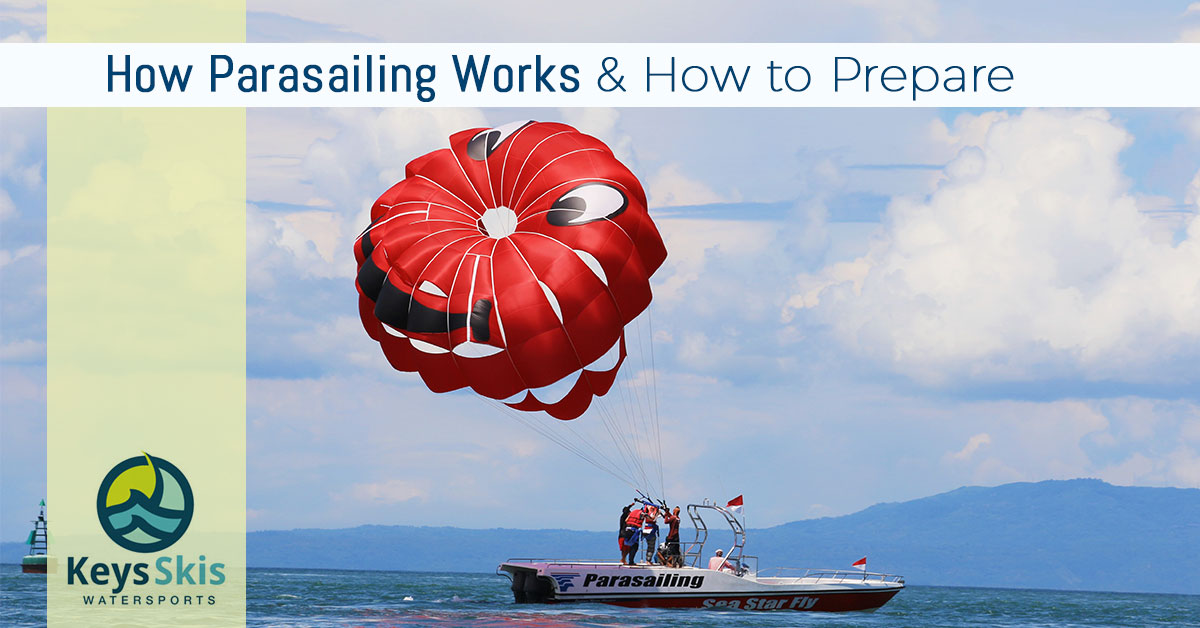Have you ever wished you had a superhero’s powers just so you could fly? That’s a pretty common desire among humanity, so much so that we’ve come up with a variety of different ways to get as close as we can to flying without growing wings. One of the most common options, at least around Key Largo, is parasailing. Want to know what it’s all about? Read on!
How Parasailing Works
Believe it or not, we can thank N.A.S.A. for parasailing as a recreational activity. The towable parachute was actually developed earlier in the 1960s, but was made primarily for military use. Then, N.A.S.A. started using the towable parachute as part of the survival training in case pilots/astronauts ever had to eject over water — the idea being that if they could steer the parachute while making their way to the water, they’d be able to steer toward safety, or at least steer away from dangers. This gave viewers ideas, and in 1974, the winch used to raise and lower parasailers was developed. From there, it quickly became a favored recreational activity in warm, beachy areas like Key Largo and around the world.
The way parasailing works is actually pretty simple. The parachute is attached to a towline controlled by a winch system. That means strong cords and a stronger control mechanism. Once the boat gets moving, a passenger or duo is strapped into the safety harness attached to the parachute. The winch slowly lets out the line and, with the combination of speed and wind power, the parachute will slowly rise up into the air, taking the passengers up with it.
That’s it. It’s that simple. When the ride is over, the winch will reel in the tow line and gently lower the parachute and passengers back down to the boat’s deck. You probably won’t even get wet — unless you request it, that is! It’s an incredibly safe way to float up high and see the area with a bird’s eye view. In fact, parasailing has (roughly) a 0.00001 percent chance of a bad outcome. As long as you’re working with a reputable and safe parasailing team, the risks involved are next to nothing. A safe team will probably go so far as to show off the chute and lines to prove to you that they keep up with safety precautions.
How To Prepare
As you might have guessed from the description of how it works, you don’t actually need to do a whole lot to prepare for your parasailing trip. We definitely suggest a few measures, simply to protect yourself from the sun and wind. First, slather on that sunscreen. You’ll be up in the air with little to no shade, so protect your skin. You’ll also want to find a way to secure loose articles of clothing. Wear shoes that strap on securely (or just leave your shoes on the boat while you go up) and find securing straps for things like sunglasses and hats so they don’t fly off mid-trip.
Want to learn more? Connect with the knowledgeable team at Keys Skis and Adventure, and book your parasailing trip today!


